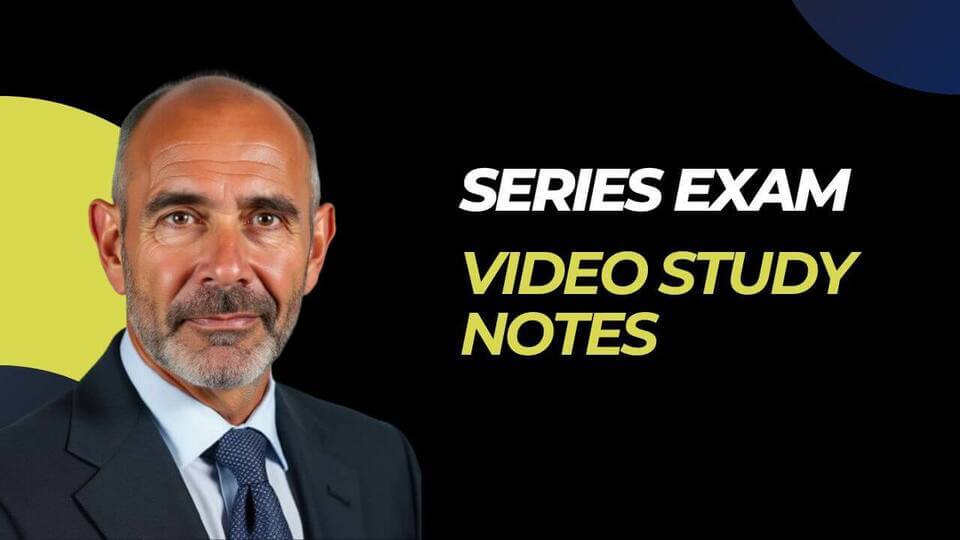What are Managed Futures and what purpose do they serve in investment portfolios?
Managed Futures are investment strategies that involve the use of futures contracts to achieve returns. They serve several purposes in investment portfolios, including diversification, risk management, and the potential for absolute returns regardless of market conditions. By investing in a variety of asset classes, managed futures can reduce overall portfolio volatility and provide a hedge against traditional equity and bond market downturns.
How have Managed Futures evolved historically, and what key events have shaped their development?
Managed Futures have evolved significantly since their inception in the 1970s, driven by the introduction of futures contracts and the need for risk management tools. Key events include the establishment of the Commodity Futures Trading Commission (CFTC) in 1974, which regulated the industry, and the 2008 financial crisis, which highlighted the benefits of diversification through managed futures. These events have led to increased institutional interest and the development of more sophisticated trading strategies.
What are the primary types of Managed Futures strategies, and how do they differ in approach?
The primary types of Managed Futures strategies include Trend Following, Mean Reversion, Arbitrage Strategies, and Multi-Strategy Approaches. Trend Following seeks to capitalize on sustained market movements, while Mean Reversion bets on the return of prices to their historical averages. Arbitrage Strategies exploit price discrepancies between related markets, and Multi-Strategy Approaches combine various strategies to enhance risk-adjusted returns. Each strategy has distinct risk profiles and market conditions under which they perform best.
What is the role of the Commodity Futures Trading Commission (CFTC) in regulating Managed Futures?
The CFTC is the primary regulatory body overseeing the futures markets in the United States. Its role includes enforcing compliance with the Commodity Exchange Act, protecting market participants from fraud and manipulation, and ensuring the integrity of the futures markets. The CFTC also establishes rules for the registration of Commodity Trading Advisors (CTAs) and Commodity Pool Operators (CPOs), which are essential for Managed Futures funds.
What are the registration and compliance requirements for Managed Futures funds under CFTC regulations?
Managed Futures funds must register with the CFTC as either a Commodity Pool Operator (CPO) or a Commodity Trading Advisor (CTA), depending on their activities. They are required to file Form CPO-PQR or Form CTA-PR, which provides information about their operations, assets under management, and performance. Compliance with CFTC regulations also includes maintaining proper records, adhering to disclosure requirements, and ensuring that marketing materials are not misleading.
What are the reporting obligations for Managed Futures funds, and why are they important?
Managed Futures funds are required to report their trading activities and performance to the CFTC and the National Futures Association (NFA). This includes regular filings of Form CPO-PQR and Form CTA-PR, which help regulators monitor market activity and ensure compliance with regulations. These reporting obligations are crucial for maintaining transparency, protecting investors, and preventing market manipulation.
How do Anti-Money Laundering (AML) regulations apply to Managed Futures funds?
Managed Futures funds are subject to AML regulations under the Bank Secrecy Act (BSA). They must implement a robust AML program that includes customer due diligence, monitoring for suspicious activities, and reporting any suspicious transactions to the Financial Crimes Enforcement Network (FinCEN). Compliance with AML regulations is essential for preventing illicit activities and maintaining the integrity of the financial system.
What investor protection regulations are in place for Managed Futures funds?
Investor protection regulations for Managed Futures funds include requirements for clear and accurate disclosures, suitability assessments, and the prohibition of fraudulent practices. The CFTC and NFA enforce these regulations to ensure that investors are fully informed about the risks associated with Managed Futures investments and that they are suitable for their investment profiles. These protections help to foster trust and confidence in the futures markets.
What is the structure of futures markets, and who are the key participants?
The structure of futures markets consists of exchanges (such as the Chicago Mercantile Exchange) and trading platforms where futures contracts are bought and sold. Key participants include hedgers (who use futures to manage risk), speculators (who seek to profit from price movements), brokers (who facilitate trades), and clearinghouses (which ensure the integrity of transactions). Each participant plays a vital role in the functioning and liquidity of the futures markets.
What are the different types of futures contracts, and how do they differ in terms of underlying assets?
Futures contracts can be categorized into Commodity Futures (which include agricultural products, metals, and energy), Financial Futures (which involve financial instruments like interest rates and stock indices), and Currency Futures (which are based on foreign exchange rates). Each type of contract has unique characteristics, including the underlying asset, contract specifications, and market dynamics, which influence trading strategies and risk management approaches.
How is pricing and valuation of futures contracts determined?
Pricing and valuation of futures contracts are determined by the forces of supply and demand in the market, as well as the cost of carry, which includes storage costs, interest rates, and dividends. The futures price reflects the expected future price of the underlying asset at the contract’s expiration. Additionally, factors such as market sentiment, economic indicators, and geopolitical events can influence pricing and lead to volatility in the futures markets.
What are margin requirements in futures trading, and how do they affect leverage?
Margin requirements are the minimum amounts that traders must deposit to open and maintain a futures position. They serve as a performance bond to ensure that traders can meet their obligations. Leverage in futures trading allows traders to control a larger position with a smaller amount of capital, amplifying both potential gains and losses. Understanding margin requirements is crucial for effective risk management, as inadequate margins can lead to margin calls and forced liquidation of positions.
What types of risks are associated with Managed Futures, and how can they impact performance?
Managed Futures face several types of risks, including Market Risk (the risk of losses due to adverse price movements), Liquidity Risk (the risk of being unable to buy or sell positions without significant price changes), Operational Risk (the risk of losses due to failures in processes or systems), and Credit Risk (the risk of counterparty default). Each of these risks can significantly impact performance, making effective risk management strategies essential for successful fund management.
What are some effective risk mitigation strategies employed in Managed Futures?
Effective risk mitigation strategies in Managed Futures include Diversification (spreading investments across various asset classes to reduce risk), Hedging Techniques (using futures contracts to offset potential losses in other investments), and Position Sizing (determining the appropriate amount to invest in each position based on risk tolerance). These strategies help to manage exposure to risks and enhance the overall stability of the fund’s performance.
How is performance measured and attributed in Managed Futures?
Performance in Managed Futures is typically measured using metrics such as the Sharpe Ratio (which assesses risk-adjusted returns), Maximum Drawdown (the largest peak-to-trough decline in value), and Alpha and Beta (which evaluate the fund’s performance relative to a benchmark). Attribution analysis helps to identify the sources of returns, allowing managers to understand which strategies or market conditions contributed to performance, thereby informing future investment decisions.
What role does technical analysis play in developing trading strategies for Managed Futures?
Technical analysis plays a crucial role in developing trading strategies for Managed Futures by analyzing historical price data to identify patterns and trends. Traders use Chart Patterns (such as head and shoulders or flags), Indicators and Oscillators (like moving averages and RSI), and Trend Analysis to make informed trading decisions. This analysis helps traders to anticipate future price movements and optimize entry and exit points for their positions.
How does fundamental analysis differ from technical analysis in the context of Managed Futures?
Fundamental analysis focuses on evaluating the intrinsic value of an asset based on economic indicators, supply and demand factors, and geopolitical events, while technical analysis relies on historical price movements and patterns. In Managed Futures, fundamental analysis can provide insights into market trends and potential price movements driven by macroeconomic factors, whereas technical analysis helps traders identify optimal trading opportunities based on price behavior. Both approaches can be complementary in developing a comprehensive trading strategy.
What is algorithmic trading, and how is it applied in Managed Futures?
Algorithmic trading involves using computer algorithms to execute trades based on predefined criteria, such as price movements or market conditions. In Managed Futures, algorithmic trading can enhance efficiency, reduce human error, and enable rapid execution of trades. Traders develop Trading Algorithms, conduct Backtesting and Optimization to refine strategies, and implement Execution Strategies to minimize market impact. This approach allows for systematic trading and can improve overall performance.
What are the key performance metrics used to evaluate Managed Futures funds?
Key performance metrics for evaluating Managed Futures funds include Return on Investment (ROI), which measures the profitability of the investment; Volatility, which assesses the degree of price fluctuations; and Risk-Adjusted Returns, which evaluate returns relative to the level of risk taken. These metrics provide insights into the fund’s performance and help investors make informed decisions about their investments.
How do Managed Futures funds benchmark their performance against indices?
Managed Futures funds benchmark their performance against relevant indices, such as the Barclay CTA Index or the Newedge CTA Index, to assess how well they are performing relative to the broader market. Benchmarking allows fund managers to evaluate their strategies’ effectiveness and make necessary adjustments. It also provides investors with a point of reference to compare the fund’s performance against industry standards.
What are the ethical considerations and best practices in Managed Futures fund management?
Ethical considerations in Managed Futures fund management include maintaining transparency with investors, avoiding conflicts of interest, and adhering to fiduciary responsibilities. Best practices involve implementing robust compliance programs, ensuring accurate and timely disclosures, and fostering a culture of integrity within the organization. These practices help to build trust with investors and enhance the reputation of the fund management industry.
What lessons can be learned from the analysis of successful and failed Managed Futures funds?
Analysis of successful Managed Futures funds often reveals the importance of disciplined risk management, adaptability to changing market conditions, and the use of diversified strategies. Conversely, failed funds may highlight pitfalls such as over-leverage, lack of transparency, and failure to adhere to investment mandates. Learning from these case studies can provide valuable insights for current and future fund managers in developing sustainable investment strategies.
How do current trends and technological innovations impact Managed Futures?
Current trends and technological innovations, such as machine learning and big data analytics, are transforming Managed Futures by enabling more sophisticated trading strategies and improved risk management techniques. These advancements allow for better data analysis, faster execution of trades, and enhanced predictive modeling. As technology continues to evolve, Managed Futures funds must adapt to remain competitive and capitalize on new opportunities in the market.
What are the implications of regulatory changes on Managed Futures funds?
Regulatory changes can have significant implications for Managed Futures funds, affecting compliance requirements, reporting obligations, and operational practices. For example, increased scrutiny from regulators may lead to higher compliance costs and necessitate changes in fund structures. Fund managers must stay informed about regulatory developments and adapt their strategies accordingly to ensure compliance and mitigate potential risks associated with regulatory changes.
What study strategies are recommended for candidates preparing for the Series 31 exam?
Candidates preparing for the Series 31 exam should adopt a structured study plan that includes reviewing recommended study materials, taking practice exams to familiarize themselves with question types, and focusing on time management techniques to ensure adequate preparation. Engaging in group study sessions and utilizing flashcards for key concepts can also enhance retention and understanding. Additionally, candidates should prioritize understanding the underlying principles of Managed Futures rather than rote memorization of rules.
What are some effective time management techniques for exam preparation?
Effective time management techniques for exam preparation include creating a study schedule that allocates specific time blocks for each topic, setting realistic goals for each study session, and regularly assessing progress. Utilizing techniques such as the Pomodoro Technique (studying in focused intervals followed by short breaks) can enhance concentration and retention. Additionally, prioritizing challenging topics and allowing time for review and practice exams can help ensure comprehensive preparation.
What tips can candidates follow to ensure success on the exam day?
To ensure success on exam day, candidates should arrive early to avoid last-minute stress, bring necessary materials (such as identification and approved calculators), and maintain a calm mindset. Reviewing key concepts and practicing relaxation techniques can help alleviate anxiety. Additionally, candidates should read each question carefully, manage their time effectively during the exam, and avoid spending too long on any single question to maximize their chances of completing the exam successfully.










